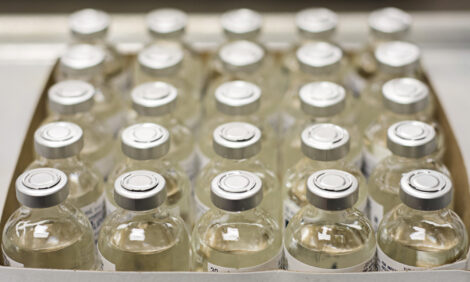



What is the Nutritive Value of Wheat for Broilers?
NORTHERN IRELAND - A new study has been initiated at the Agri-Food and Biosciences Institute (AFBI) to develop a more accurate means of predicting the nutritive value of wheat for broilers.Wheat is the major component of broiler diets but there is considerable variability in its nutritive value across different batches. This variability results in major differences in bird performance and is a significant cost to the broiler industry.
Specific weight is still used by the animal feed industry as a measure of grain quality even though it has been well established that there is a poor relationship between this measurement and nutritive value.
It continues to be used as there is no accurate and rapid alternative to predict quality and so is the only current means of getting any rapid indication of grain quality.
Wheat with a specific weight of less than 72 kg per HL is either rejected by the broiler industry or wheat growers are subject to penalties as the grain is perceived to be of low quality.
Over recent years, poor weather conditions during the growing and harvesting periods has resulted in wheat with a low specific weight value and hence perceived low quality.
The poor growing conditions have negatively impacted on grain filling and may also have led to an increase in mycotoxin and microdochium level which separately, or in combination, will cause performance problems in birds.
In view of this background, AFBI, DARD, HGCA, Moy Park Ltd., Aunir Ltd. and Harper Adams University College have formed a partnership to conduct research and develop a rapid means of accurately determining the nutritive value of wheat for broilers. The research is funded by DARD, HGCA and Moy Park Ltd.
Previous research by AFBI has indicated that Near Infrared Reflectance Spectroscopy (NIRS) has the potential to accurately predict how broilers will perform when offered a diet based on wheat at a particular grain quality.
NIRS is a rapid, non-invasive procedure which, if accurate, would be a viable commercial alternative to measuring specific weights.
Previous research has enabled development of a robust relationship between the actual performance of broilers in feeding trials and the NIRS predicted average daily gain and predicted feed efficiency, with an accuracy of over 80 per cent (R2= 0.82 and 0.83 respectively).
However, these equations were based on birds kept under experimental conditions and so the primary objective of the new project is to undertake research that will validate these NIRS equations under commercial conditions.
The poor growing and harvesting conditions of previous years has provided the ideal opportunity to gain access to perceived low quality wheat and enables work to be conducted which will help identify if and why such grain is of poor quality.
This project also aims to investigate some novel factors which have received little previous research attention.
For example, it has been suggested that the moisture content of grain at harvest and subsequent drying conditions may have a detrimental effect on quality, but there is a lack of information in this area.
A further objective is to investigate the effect of moisture content at harvest, and mycotoxin and microdochium level on the nutritive value of wheat for broilers.
The experimental work is ongoing with wheat samples sourced from across Northern Ireland, Great Britain, Europe and North America.
AFBI are grateful for the assistance of local wheat producers and suppliers for their efforts in providing the wheat samples. Broiler trials are currently ongoing and it is planned that some results will be available later in the year.
This will be the first step in providing the local industry with an accurate means of predicting wheat quality and hence broiler performance on wheat-based diets.








